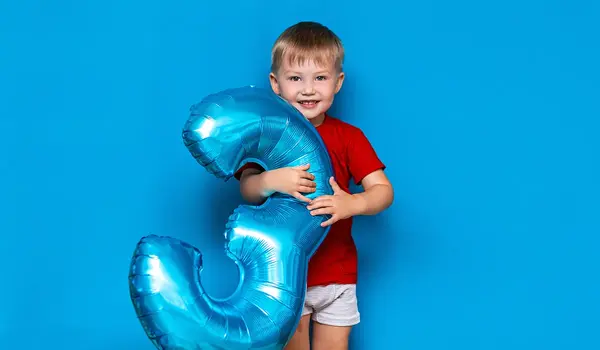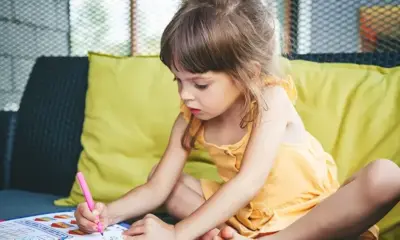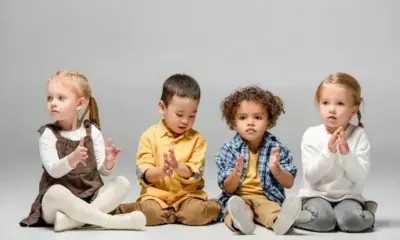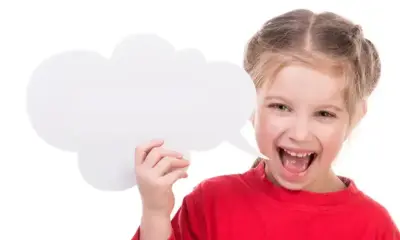Preschooler Development
Milestones in Development for 3-Year-Olds

Three-year-olds are delightful, imaginative, and loving little individuals. At this stage, it may feel like your child is truly becoming a little person, and you’ll start to engage with them in new and exciting ways.
While many parents feel a sense of relief when they move past the “terrible twos,” hoping their child will become easier to manage, three-year-olds can still present challenges. At this age, they are learning to navigate and control their emotions, which can lead to frustration and big feelings. If you’re facing difficulties, know that you’re not alone.
Let’s explore the key developmental milestones for three-year-olds, how to support their growth, and when to be concerned about their progress.
Language and Cognitive Milestones for Three-Year-Olds By age three, your child’s language skills will expand significantly. They will be speaking in longer sentences, about four to five words, and engaging in real conversations. They should be able to ask for items by name, follow simple instructions, and make eye contact with others.
As their curiosity grows, so will their questions. Expect to hear plenty of “why” and “how” as they explore the world and their role in it. If your child seems hard to understand or frustrated by communication difficulties, a speech-language evaluation may be helpful.
Movement, Hand, and Finger Milestones for Three-Year-Olds At this age, three-year-olds have boundless energy. They are also refining their physical abilities and learning new skills. Some notable gross motor milestones include pedaling a tricycle, climbing stairs one step at a time, and running or jumping with more ease.
Fine motor skills are also developing. Your child will likely be able to build a tower with six or more blocks and draw with crayons, markers, or pencils. Additionally, they may start to copy simple shapes like vertical and horizontal lines and circles.
Emotional and Social Milestones for Three-Year-Olds Emotional regulation is still a work in progress for three-year-olds, and tantrums may continue. They experience a wide range of emotions and are learning how to express them, which can lead to meltdowns, especially in response to changes in routine.
At this stage, your child’s imagination is blossoming. They will enjoy make-believe activities like playing house. Socially, they are learning to interact with others, share, and take turns, but they may still struggle with possessiveness over their toys, which can trigger tantrums.
Three-year-olds are also starting to understand empathy. For example, they might comfort a friend who is upset.
Other Milestones for Your Three-Year-Old One major milestone many parents look forward to is potty training. However, it’s important to note that every child is different, and there’s no set timeline for when potty training should be completed. While many three-year-olds are ready to start the process, some may still have accidents even after turning four. Patience and humor are essential, and it’s always a good idea to consult your pediatrician if you have concerns.
How to Support Your Three-Year-Old’s Learning and Growth At this age, your child is navigating big emotions. You can help by guiding them in understanding and naming their feelings—such as “sad,” “mad,” or “frustrated”—and reassuring them that these emotions are normal.
During meltdowns, redirection can be helpful, such as offering a favorite toy or suggesting a fun activity. Giving your child choices can also provide a sense of control, like saying, “Would you rather play outside or have a dance party?” Ensuring your child gets enough sleep and eats regularly can also prevent many meltdowns.
How to Keep Your Three-Year-Old Safe While three-year-olds are gaining independence, they are still too young for unsupervised play, especially outdoors. Teach them safety rules like never running into the street and staying away from traffic while riding a tricycle. It’s also a good time to start teaching basic stranger safety.
To support their overall health, make sure your child is getting enough sleep (typically 11-13 hours, including a nap), exercise, and a balanced diet. Be mindful of selective eating—if your child is only willing to eat a few types of food, it might be time to consult your pediatrician to ensure they’re getting the right nutrition.
When to Be Concerned About Your Three-Year-Old’s Development Every child develops at their own pace, but certain signs may indicate delays in development. If you notice your child losing skills they once had, such as the ability to walk or jump, frequent falls or injuries, or a lack of participation in play, it’s important to speak with a healthcare provider. They may refer your child for a developmental screening to assess any concerns.
Each child is unique, and while developmental milestones provide a helpful guide, they aren’t firm rules. If you have any concerns about your child’s growth or abilities, don’t hesitate to reach out to your pediatrician.










